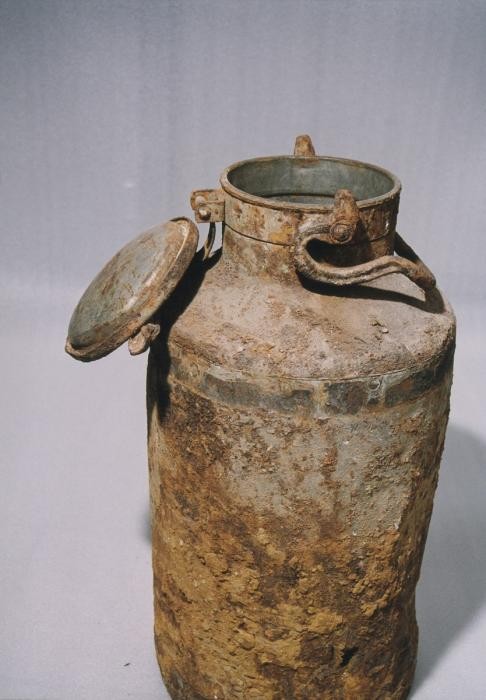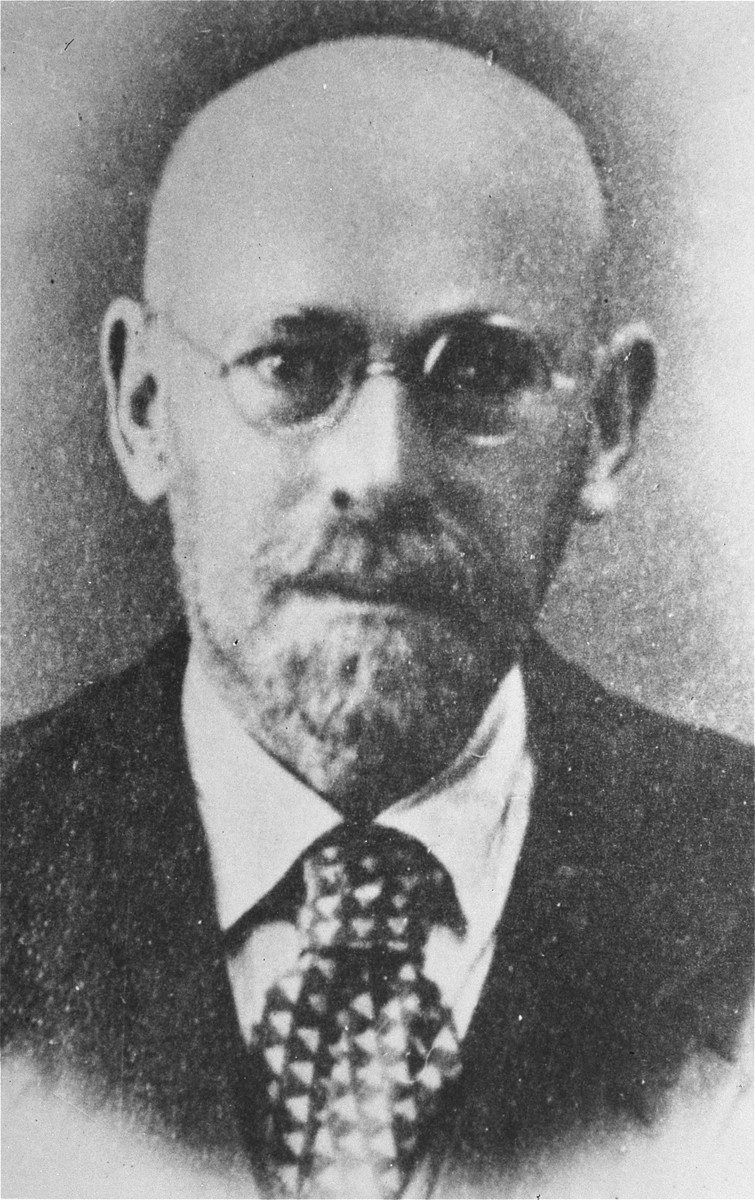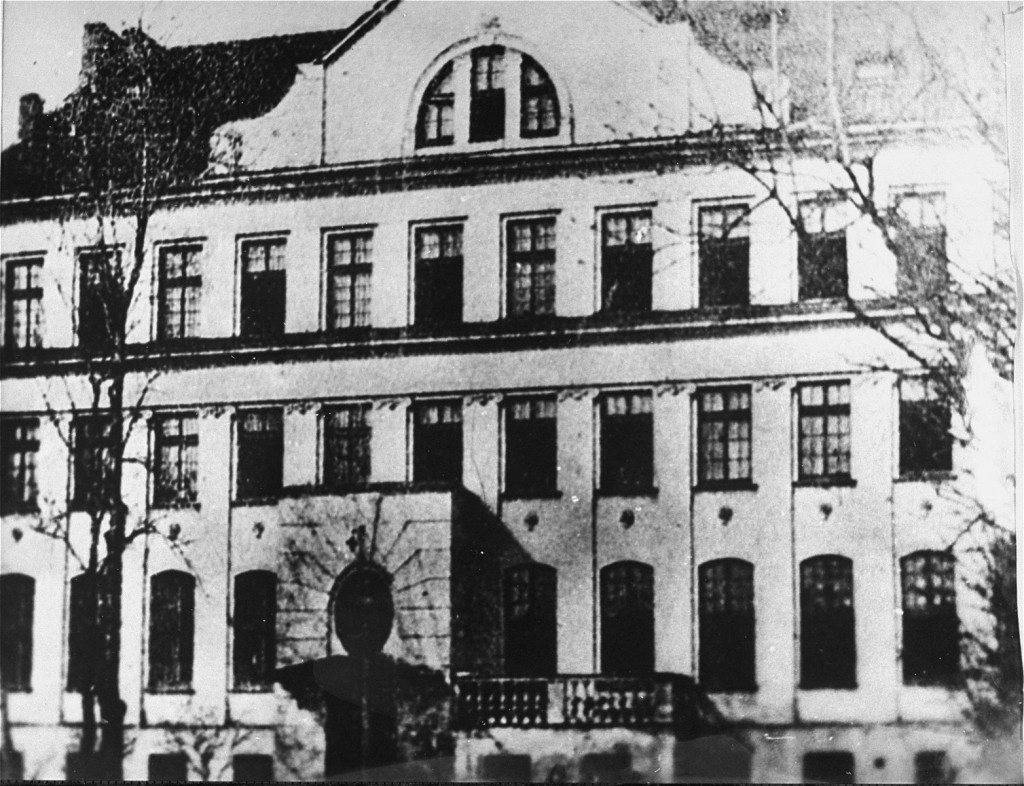Displaying: 351 – 375 of 1,018 matches for “Holocaust Encyclopedia: Warsaw”
-
351. Welwel Kisielnicki
small, predominantly Jewish town of Kaluszyn, which was 35 miles east of Warsaw. The Kisielnickis were ... Warsaw on business. 1933-39: The Kisielnicki family's hopes that the war wouldn't reach Kaluszyn
-
352. Israel Yitzak Kisielnicki
Warsaw in the small, predominantly Jewish town of Kaluszyn. Israel's mother was a housewife, and his ... father was a merchant who often traveled on business, by horse and wagon, to Warsaw. Israel attended
-
353. Rojske Kisielnicki Sadowsky
The second of three children, Rojske was born to Jewish parents living 35 miles east of Warsaw ... and wagon, to Warsaw on business. When Rojske was in her twenties, she married Welwel Sadowsky, a
-
354. Lila Lam
her mother, brother and uncle escaped and, using bribes, got to Warsaw ... house and tried to rape her. Luckily, he let her go. During the August 1944 Warsaw uprising, Lila
-
355. Herman Klein
brother were deported to a labor camp built in the ruins of the Warsaw ... ghetto. In 1944 Herman was deported from Warsaw to the Kaufering
-
356. Klara Mintzberg
orphanage in Warsaw. When war broke out in September 1939, Rzeszow was ... In 1942 they fled to Warsaw and lived with Klara's mother and sister
-
357. Sevek Fishman
Sevek's religious Jewish family owned a haberdashery business in Kaluszyn, a suburb of Warsaw ... Warsaw ghetto, and he was married there that same year. After two years, Sevek and his wife
-
358. Dorotka Goldstein
the Jewish Telegraphic Agency in Warsaw and worked for a popular newspaper. An avid Zionist, he had ... traveled to Palestine. 1933-39: Dorotka's father established a soup kitchen in Warsaw for Jewish
-
359. Raizel Kisielnicki
the small, predominantly Jewish town of Kaluszyn, which was 35 miles east of Warsaw. By the 1930s ... business, as many truck drivers stop here for a quick meal on their way into Warsaw. Her mother-in-law
-
360. Abram Kisielnicki
Jewish town of Kaluszyn, 35 miles east of Warsaw. Abram's father owned a ... ghetto and to make sure that everyone respected the curfew hours. Abram escaped to Warsaw in late
-
361. Frederick Fleszar
while Frederick was interned, his brother helped him contact the U.S. embassy in Warsaw. Before proof of ... irreparable hearing damage. After his release, Frederick opened a medical practice in Warsaw. He moved back to
-
362. Oneg Shabbat archive

The Oneg Shabbat underground archive was the secret archive of the Warsaw ghetto.
-
363. Three Jewish partisans
Three Jewish partisans in the Wyszkow Forest near Warsaw. Poland
-
364. Portrait of Rabbi Shimon Huberband

's Oneg Shabbat archives in the Warsaw ghetto.
-
365. Portrait of Janusz Korczak

ran a Jewish orphanage in Warsaw, circa 1930.
-
366. The Krochmalna Street Orphanage

Established in 1912, the orphanage was located at 92 Krochmalna Street in Warsaw
-
367. Shimshon and Tova Draenger
Kraków and Warsaw ghettos and partisans in
-
368. Yitzhak (Antek) Zuckerman
Organization (ZOB). He fought in the Warsaw ghetto uprising. Place and date
-
369. Portrait of Tosia Altman
member of the Jewish underground in the Warsaw ghetto.
-
370. Abraham Lewent's prisoner jacket
Abraham Lewent, who had been sent from the Warsaw ghetto to
-
371. Portrait of Josef Kaplan
was also a leader of the Warsaw ghetto underground and Jewish Fighting Organization (ZOB). He was
-
372. Elzbieta Lusthaus
escaped to Milanowek, a town near Warsaw. There they lived with a Polish family. Four-year-old Elzbieta ... the destruction of the Warsaw ghetto, German authorities intensified
-
373. Rescue and Resistance
Holocaust despite the inhumane conditions created by the Nazis during the Holocaust. Read about people who ... revolted against Nazi oppression in the Warsaw ghetto and in killing centers.
-
374. Szlamach Radoszynski: Maps
following year, Szlamach and the rest of the Jews of Warsaw were forced into a ghetto. After the ghetto
-
375. Stroop Report cover
SS Major General Juergen Stroop, commander of German forces that suppressed the Warsaw ghetto
